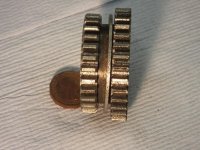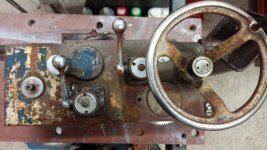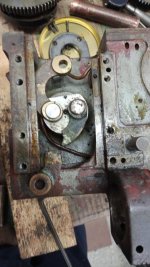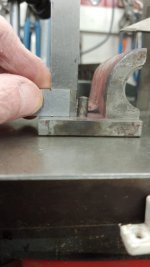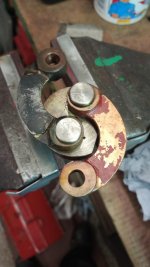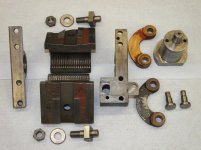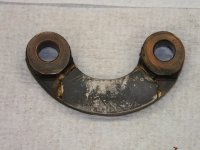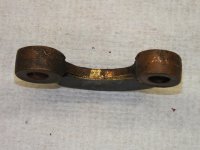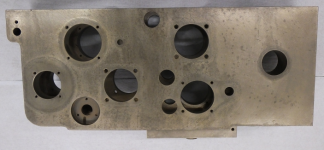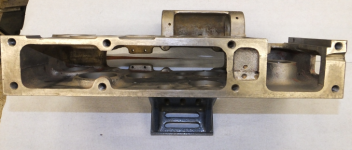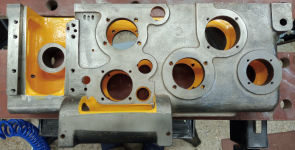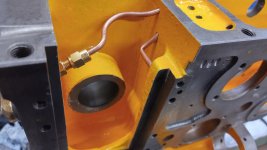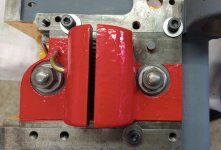CarbideTip
Aluminum
- Joined
- Sep 21, 2016
- Location
- Woking, Surrey, UK.
Well it’s been sitting on the bench looking back at me for the last six months and now the time has come to see what needs doing.
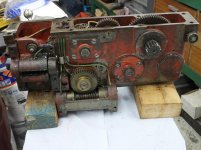
There will be a good deal of commonality with a 10EE apron as the early CVAs were a clone of the round dial but with a conventional AC motor and gearbox. There will be some differences too. First off CVA’s don’t have the protective cover over the worm and wheel. I may try and add one to mine.
I’ve been aware for a while that my apron is in a poor state due, I believe to neglect rather than abuse of the previous owner. This is the oil window sighting disk (don’t think 10EE’s have these)

The discolouring is almost certainly due to cutting fluid getting into the apron. Some of the others were slightly discoloured due to oil but this one is by far the worst of the 6 on the machine.
Here’s what they should look like (This is a head stock one. There's no oil in at the moment)
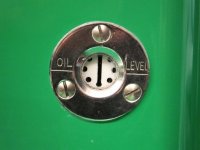
Dismantling was fairly straightforward, but everything inside the apron was very dirty.

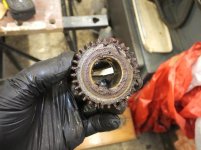
I will be replacing all the ball races but the manufacturers choice of shielded vs unshielded seems a bit bizarre to me.
Worm wheel shaft: 2 x 6204 with double shields
Carriage traverse hand wheel shaft. 2 x 6203 unshielded
Rack pinion shaft. 2 x 6205 unshielded
Why not put a shielded bearing next to the rack pinion?
Similarly why is the worm wheel shaft shielded on the front of the apron where it’s covered in?

There will be a good deal of commonality with a 10EE apron as the early CVAs were a clone of the round dial but with a conventional AC motor and gearbox. There will be some differences too. First off CVA’s don’t have the protective cover over the worm and wheel. I may try and add one to mine.
I’ve been aware for a while that my apron is in a poor state due, I believe to neglect rather than abuse of the previous owner. This is the oil window sighting disk (don’t think 10EE’s have these)

The discolouring is almost certainly due to cutting fluid getting into the apron. Some of the others were slightly discoloured due to oil but this one is by far the worst of the 6 on the machine.
Here’s what they should look like (This is a head stock one. There's no oil in at the moment)

Dismantling was fairly straightforward, but everything inside the apron was very dirty.


I will be replacing all the ball races but the manufacturers choice of shielded vs unshielded seems a bit bizarre to me.
Worm wheel shaft: 2 x 6204 with double shields
Carriage traverse hand wheel shaft. 2 x 6203 unshielded
Rack pinion shaft. 2 x 6205 unshielded
Why not put a shielded bearing next to the rack pinion?
Similarly why is the worm wheel shaft shielded on the front of the apron where it’s covered in?




